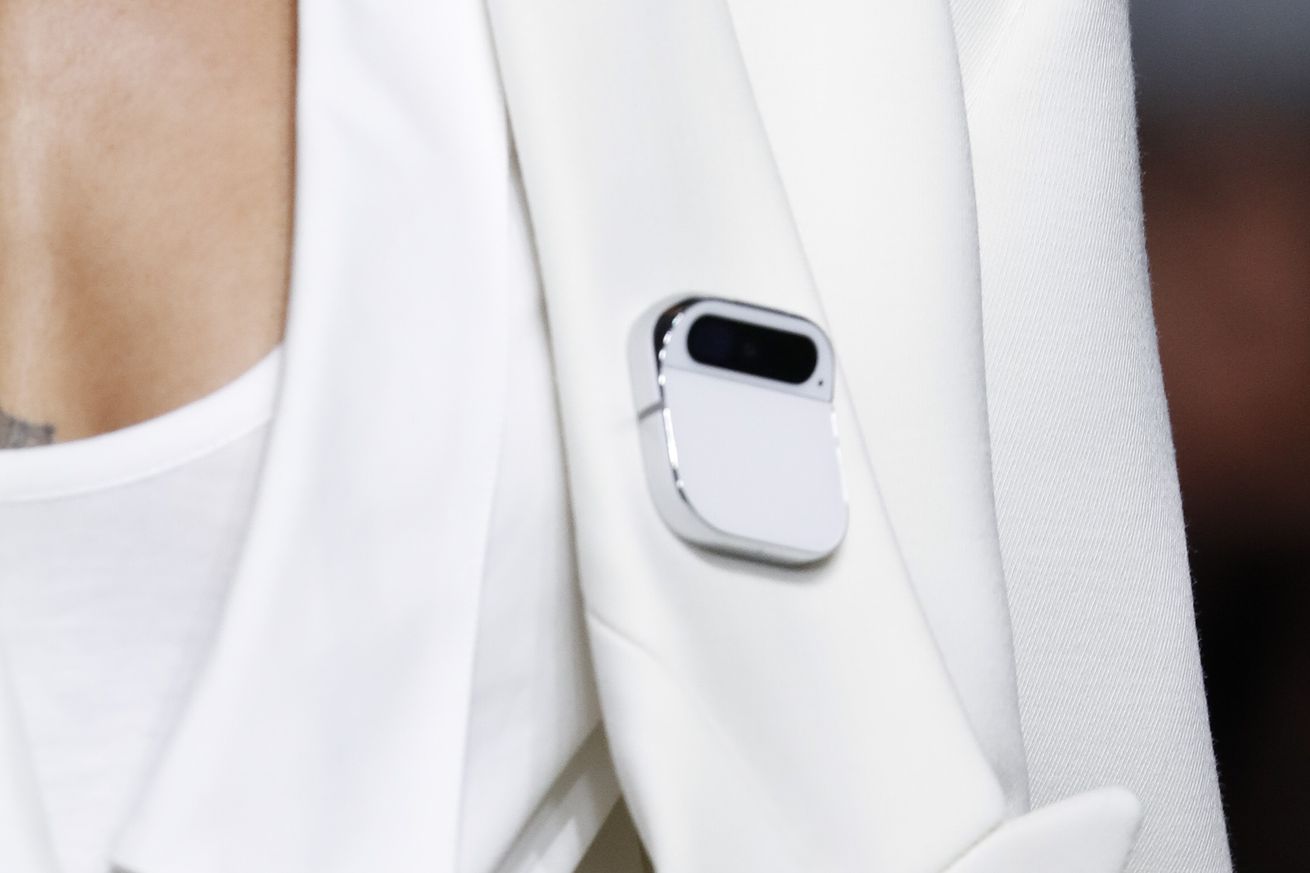
The iPhone 15 and iOS 17 do a whole bunch of new things that many of us here at The Verge enjoy, but one of our favorites is Apple’s StandBy mode. The simple little feature turns your iPhone into a small smart display once you place it on a MagSafe / magnetic Qi stand in landscape orientation. This allows you to see an assortment of full-screen widgets, including a pleasant desk clock, a calendar, or both.
Using the new StandBy mode may involve some menu diving if you want to customize it to your liking (which is definitely part of the fun), but getting started is as simple as turning on the feature and plopping your phone on a charger sideways.
Of course, if you don’t already own a magnetic charging stand for your iPhone, you’ll need to grab one to take advantage of the handy new feature. Luckily, a number of great options are currently discounted, allowing you to pick up a StandBy-compatible stand and achieve those 15W (or 7.5W) charging speeds without spending a fortune.
The best deals on StandBy-ready charging stands
Leading us off, Belkin’s latest BoostCharge Pro 3-in-1 Wireless Charger with MagSafe is on sale direct from Belkin for $129.99 ($20 off) with promo code FALL23. It’s a progressive code that allows you to save more money as you spend above certain tiers, so if you cross the $150 threshold, it will instead save you $40. The real play here is to add an inexpensive accessory like this $7.99 USB-C to USB-A cable and get both for a total of $117.98.
Belkin’s multi-charger — which looks a whole lot like a techy tree — not only charges your iPhone at true 15W MagSafe speeds, but also fast-charges compatible Apple Watch models (including the Series 7, 8, and 9). It can also charge a pair of AirPods or another Qi-enabled device on its base, making it one of the best 3-in-1s you can get for home use.
If you want to spend a little less or don’t need an Apple Watch charger, the 2-in-1 version of Belkin’s charger is also on sale at the manufacturer’s site for $89.99 ($10 off) when you use offer code FALL23. However, just like with the aforementioned 3-in-1 charger, the discount increases if you add an item to your order (like that one-meter cable), allowing you to knock $20 off your total instead of a mere $10.
The Belkin BoostCharge Pro 2-in-1 Wireless Charger with MagSafe is, as it sounds, a smaller version of the triple charger above. It takes up slightly less space, still charges an iPhone at up to 15W, and is StandBy-compatible by mounting the phone to it sideways. Just be aware that the AirPods charging spot is recessed, meaning you can’t charge a second phone down there.
If you want a StandBy-compatible charger that takes up less space on a desk or table and travels well, look no further than the Anker 3-in-1 Cube with MagSafe — which is currently on sale direct from Anker with delayed shipping for $119.96 (around $30 off) when you use promo code ANKER20%OFF at checkout. The Anker Cube is about as small as you can get for a multi-charger that charges a MagSafe iPhone, a pair of earbuds, and an Apple Watch (via an adorable slide-out shelf). The lid tips to display your phone at varying angles, too, and allows for a very compact and low-height StandBy mode experience.
On a tighter budget but still want a multi-charging stand that will work for StandBy mode and charge other devices? Well, if you don’t mind your iPhone charging at slower 7.5W speeds, the ESR HaloLock 3-in-1 Charger Stand for Magsafe is currently selling for $51.99 ($13 off) at Amazon when you click the on-page coupon for 20 percent off.
ESR’s economy-level stand doesn’t support proper MagSafe charging speeds, but its magnetic Qi charging should be adequate for most situations if you don’t need the quickest top-ups. It also charges a pair of AirPods and an Apple Watch, and its niftiest feature is that the Apple Watch pad can be removed and used independently via its USB-C plug.
The best deals on StandBy-ready charging pucks and battery packs
It isn’t just bulky stands that work with iOS 17’s StandBy mode. You can also opt for Belkin’s BoostCharge Pro with MagSafe charging puck and its cute little kickstand, which is currently available from Amazon for $29.99 ($20 off) and from Belkin for $26.99 ($23 off), the latter with promo code CLR10. Not only is this the best charging puck you can buy thanks to its lengthy braided cable and support for 15W charging speeds, but it’s also one of the few that supports StandBy mode given it props your phone up via a built-in kickstand.
And just for good measure, here’s a discounted battery pack you can use with Apple’s StandBy mode. The Anker 622 Magnetic Battery (MagGo) is on sale at Amazon in multiple colors for $39.99 ($30 off) when you click the on-page coupon.
Anker’s MagGo charger may not charge at full MagSafe speeds but it features an unfolding origami-like kickstand that, while small, is strong enough to support a Max-sized iPhone. You can also mount your MagSafe-compatible iPhone to the magnetic Qi battery pack in a horizontal orientation, letting you take full advantage of StandBy mode while your phone is charging via the 5,000mAh battery.

/cdn.vox-cdn.com/uploads/chorus_asset/file/24964972/A_word_from_the_Cryptkeeper_Photo_by_JW_Hendricks.jpeg) WGA / Brittany Woodside
WGA / Brittany Woodside
/cdn.vox-cdn.com/uploads/chorus_asset/file/24964986/1695895500.jpg) Getty Images / Mario Tama
Getty Images / Mario Tama
/cdn.vox-cdn.com/uploads/chorus_asset/file/24964999/1665750267.jpg) Getty Images / Photo by Michael M. Santiago
Getty Images / Photo by Michael M. Santiago
/cdn.vox-cdn.com/uploads/chorus_asset/file/24965004/Name_tags_for_El_Segundo_and_a_sign_for_streaming_transparency.jpeg) WGA / J.W. Hendricks
WGA / J.W. Hendricks
/cdn.vox-cdn.com/uploads/chorus_asset/file/24965118/1709389215.jpg) Photo by Victor VIRGILE/Gamma-Rapho via Getty Images
Photo by Victor VIRGILE/Gamma-Rapho via Getty Images
/cdn.vox-cdn.com/uploads/chorus_asset/file/24965140/1708878334.jpg) Photo by Justin Shin/Getty Images
Photo by Justin Shin/Getty Images

/cdn.vox-cdn.com/uploads/chorus_asset/file/24953910/Copy_of_GABRIELAGABRIELAA_01479.JPG) Image: Meta
Image: Meta
/cdn.vox-cdn.com/uploads/chorus_asset/file/24951497/236805_Quest_3_and_Ray_Ban_meta_glasses_BFarsace_0007.jpg) Photo by Becca Farsace / The Verge
Photo by Becca Farsace / The Verge
/cdn.vox-cdn.com/uploads/chorus_asset/file/24951496/236805_Quest_3_and_Ray_Ban_meta_glasses_BFarsace_0006.jpg) Photo by Becca Farsace / The Verge
Photo by Becca Farsace / The Verge

/cdn.vox-cdn.com/uploads/chorus_asset/file/24698932/DSC04842_processed.JPG) Photo by Allison Johnson / The Verge
Photo by Allison Johnson / The Verge



/cdn.vox-cdn.com/uploads/chorus_asset/file/24961825/Samsung_Galaxy_S24_5K1_scaled.jpg) Image: SmartPrix / OnLeaks
Image: SmartPrix / OnLeaks



/cdn.vox-cdn.com/uploads/chorus_asset/file/24956728/raspberry_pi_closeup.jpg) Photo by Emma Roth / The Verge
Photo by Emma Roth / The Verge


/cdn.vox-cdn.com/uploads/chorus_asset/file/24957452/Screen_Shot_2023_09_22_at_2.17.26_PM.png) Image: Adobe
Image: Adobe


/cdn.vox-cdn.com/uploads/chorus_asset/file/24952151/1459135602.jpg) Photo by Jeffrey Greenberg / Universal Images Group via Getty Images
Photo by Jeffrey Greenberg / Universal Images Group via Getty Images